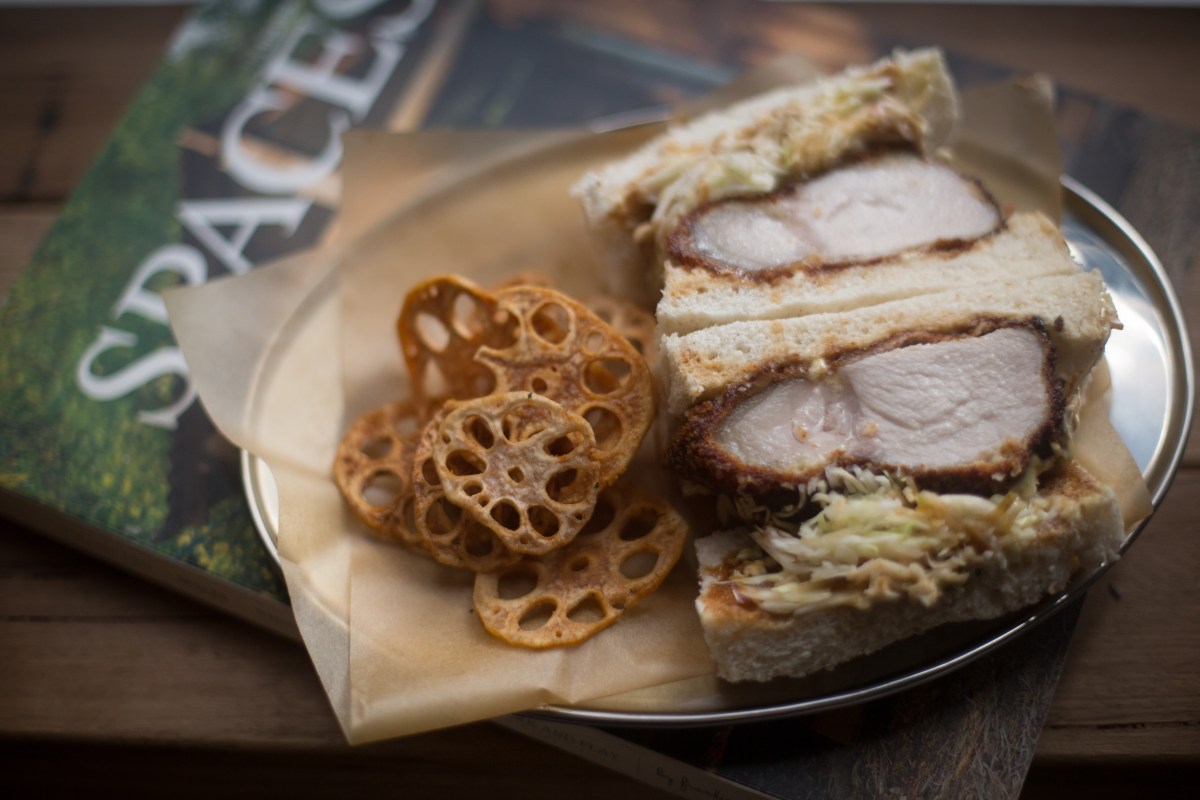Chances are you’ve consumed or at least heard about the culinary delights at Seven-Eleven in Japan. Between fried chicken, onigiri and snacks aplenty, the pork katsu sandwich is a firm favourite. There’s something comforting about a deep-fried pork culet, cabbage and tonkatsu sauce sandwiched between pillowy white bread.
Once reserved to a delicacy enjoyed in Japan, the iconic sandwich has been snapped up by Australian operators. Hospitality talks to Sando Bar’s Naoya Shimada and Sandoitchi’s Sam Lawrie about flavour profile, why white bread is king and the perfect accompaniments to the adopted sandwich.
INSPIRATION
For chef Naoya Shimada, putting katsu sandos on the menu of his new venture wasn’t really a question, but a calling. “I always wanted to go with a Japanese theme being half-Japanese, and I thought the katsu sando just worked for a café in Surry Hills,” he says. “I didn’t really plan for it at the beginning, but the more I played around with it, the more I thought it would be a really good idea. Also, a lot of people have been to Japan so they’re familiar with it.”
Chef Sam Lawrie took the café’s space restrictions into consideration when designing the menu. “We’re all massive fans of the culture and cuisine, so we wanted to do Japanese-style sandwiches,” says Lawrie. “The pork katsu sandwich is a classic and we knew it would be an up-and-coming thing.”
BREAD
Soft white bread is one of the defining features of the katsu sandwich and can easily make or break the lunchtime staple. A good katsu sando benefits from uniform white bread over house-made options, which can be temperamental, which is why Sando Bar and Sandoitchi order in bread from suppliers.
Shimada tested a few different options before settling on white bread the kitchen slice and remove the crusts from. “When I was in the planning process, I tested different brands and bakeries,” says the chef. “But we’re always evolving so I keep an eye out for better bread.”
BRINING AND CRUMBING
A good katsu sando comes down to the protein. The pork has to be juicy and offer good crunch from the coating. But before the cooking process begins, it’s all about the brine. Sandoitchi’s process begins days before it ends up in a sandwich.
“We marinate the pork loin overnight; preferably over two nights,” says Lawrie. Once the pork is brined, the venue crumbs the meat daily using panko crumbs, which are known for their crunch. As panko crumbs are larger and of lighter texture compared to standard breadcrumbs, they don’t absorb as much oil, which ensures food is kept crisp and crunchy.
Lawrie uses rice bran oil due to its high fry point, and says it takes approximately six minutes to cook the pork. “Personally, I like it a bit pink in the centre, but a lot of customers want it cooked through,” he says. “You want to keep it as juicy as possible.”
Sando Bar brine their free-range pork loin in shio koji, a popular Japanese seasoning made from water, salt and rice koji (cooked rice inoculated with Aspergillus oryzae). “Shio koji helps the pork stay juicy and adds a nice umami flavour,” says Shimada. “When I was coming up with the pork sando, I played around with brines from mirin to plain sake to just a salt brine. Finally, I tried shio koji and felt that it worked best for the pork.”
Due to the potency of the brine, it only takes around 40 minutes for the pork to be ready.
“Shio koji is quite potent and breaks down the proteins in the meat,” says Shimada. “If you leave it too long it can affect the texture and become a bit mushy.” After the brine has worked its magic, the loin is crumbed and ready for frying in cottonseed oil.
FILLING
Traditionally, a katsu sandwich is nothing more than meat, sauce, cabbage and bread. But local venues are upping the veg factor and creating a more varied flavour profile.
“We pickle the slaw in apple and rice vinegar,” says Shimada. “I also incorporate shaved fennel, sweet Fuji apples and shredded cabbage.”
Sandoitchi have also added pickles to their katsu sandwich, including pickled carrots and salted cucumber with the cabbage. “Normal katsu sandos are very umami packed and savoury,” says Lawrie. “We’ve added a bit more pickled carrot and tried to have more of a range of flavours and textures. We also put nori in there and burger cheese, which is a bit different, but we think it works well.”
SAUCE
Tonkatsu sauce can be described as Japan’s answer to Worcestershire. Bull-Dog brand is the most popular incarnation of the sauce, and is known for its sweet taste and thick texture. Sandoitchi mixes Kewpie mayo with Bull-Dog sauce, while Sando Bar goes for a harder hit. “We make a Japanese-style mayo mixed with Karashi mustard which is quite hot,” says Shimada. “Getting the balance right is important — you don’t want too much heat because not everyone can handle it. We also use Bull-Dog tonkatsu sauce.”
Whether it’s traditional or forward-thinking, katsu sandwiches are appearing on menus from a range of venues. But one thing’s for sure — the trend shows no signs of slowing down. “It’s getting more popular,” says Lawrie. “The katsu sandwich just makes sense.”
This article originally appeared in Hospitality‘s October issue. Subscribe here.
Image credit: Sando Bar

